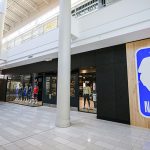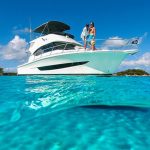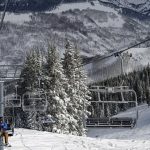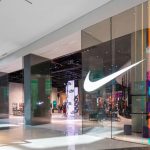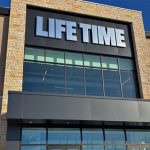The mood at the recent WSA show was quite somber, with retailers and
exhibitors alike feeling the chill of the malaise in the athletic shoe
business. Foot Lockers broad restructuring news, which broke
just as the show was opening, definitely put a damper on spirits that
continued throughout the show as retailers searched for something to
signal the spark of a new trend that may pull the market out of its
doldrums.
Aside from the continued good news coming out of the
Crocs booth, most of the positive trends were represented by items
rather brands or categories. Anyone looking for the next new
thing was left acknowledging a few interesting styles that showed hope
for Spring 08.
Before the show (and the market) opened on Monday, Foot Locker, Inc.
announced that they were closing up to 250 stores (double the previous
number) and taking a $55 million write-down on inventory to “liquidate
slow selling merchandise.” This write-down equated to a cost of
22 cents a share and caused guidance to be revised from a net gain of
15 cents to 20 cents per share to a net loss of 17 cents to 20 cents
per share. The company also stated that comparable sales for the
second quarter were now expected to decline by 7% to 8%. The
company had previously stated that they expected inventory to be below
last years level at the end of the quarter, as a result of the
clearance efforts.
Foot Locker also announced key management changes, with Keith Daly,
currently president and CEO of Foot Locker Europe, promoted to
president and CEO of Foot Locker U.S. He will have
responsibility for Foot Locker, Footaction and Kids Foot Locker.
Mr. Daly, who was previously chief merchant at Footaction and president
of And 1 footwear, is presumably replacing Nick Grayston who formerly
held these roles. Mr. Daly will be replaced by Dick Johnson, who
has been president and CEO of Footlocker.com. A replacement
for Mr. Johnson has not been named.
The retailer also confirmed that it had retained Lehman Brothers as an
advisor to “evaluate strategic alternatives, including inquiries
received from private equity firms.”
Later the same day, while attendees were still digesting the Foot
Locker news, Shoe Carnival revised its guidance downward as well.
SCVL now expects diluted earnings per share to range between zero and
five cents for the second quarter on a comparable store sales decline
of 6% to 7% for the period. The retailer said that 3% to 4% of
the estimated comparable store sales decline was attributable to the
“shifting of back-to-school dates and certain states tax-free days
later in August.” However, the shift should benefit the third
quarter results. Management said the merchandise team has been
“aggressively liquidating” spring and summer product and per-store
inventories are “expected to be flat.”
As could be expected these two gloomy projections cast a pall across
the show. While most of the major retail players in the athletic
shoe industry were in attendance, the location of the athletic section
and the bad news made traffic seem even lighter than normal.
Anecdotally, most were negative about the upcoming back-to-school
season, with one analyst stating, “I expect this to be the most
promotional back-to-school we have ever seen.”
The results from SportScanINFO appear to confirm a slowing
market.
Sales of Sport Footwear year-to-date are only up in the
low-single-digits in dollars, well off the trend of 2006. It is
clear that the core high school consumer is no longer compelled to buy
sport specific footwear, but is much broader in the scope of the kinds
of sneakers they need for school. The Performance Footwear
business is down in the low-single-digits — with full-line sporting
goods continuing to perform well, but offset by declines at family
footwear and the mall — while Lifestyle Fashion Athletic footwear is
up in the mid-teens. This shift in consumer preference is like
two tectonic plates pushing against each other, with a resulting
earthquake for the overall athletic shoe industry.
One trend that has clearly evolved at WSA is that of “green” footwear
made of recycled and/or sustainable materials. The outdoor brands
have done the best work here, with athletic trailing far behind.
The youth of today are clearly focused on the concept of sustainability
and SEW expects they will gravitate in that direction over time.
Beyond “green,” there was a decided paucity of new concepts and ideas,
perhaps reflecting the pessimism of the entire market.
Eco-Friendly. In light of worldwide concerns surrounding rising fuel
costs and global warming, it is no surprise that one of the most
significant trends at the show was a focus on eco-friendly footwear and
sustainable business practices. (A case in point was a seminar called
“EcoEthics and Growing a Green Business,” co-sponsored by The WSA Show
and Simple Shoes, which attracted a standing-room-only crowd.)
While the eco-movement has been gaining momentum for the past few
seasons in the outdoor market, it is now making significant in-roads in
lifestyle and fashion footwear categories, as well. This popularity was
apparent in the growing number of shoes-and often, entire
collections-featuring eco-friendly materials such as hemp, bamboo,
vegetable tanned leathers, natural rubbers, and construction methods
using earth-friendly glues and solvents. Timberland, Keen, Simple,
Earth, The North Face, Merrell, Patagonia, Ahnu, El Naturalista and
Mink are among the many companies making such an effort.
Mixed Media. To liven up familiar footwear silhouettes, many
vendors have blended materials and textures to add tactile and visual
interest. While the materials themselves-such as leather, rubber,
canvas, linen, organic cotton, nylon, suede, nubuck and wool-may be
familiar, they are being combined in new ways. For instance, a
patterned canvas upper may now be enhanced with the addition of
distressed leather trim, a textured rubber toe bumper, and uniquely
patterned outsoles.
Along these lines, and also connected to the eco-friendly trend, is a
handcrafted, artisan-like aesthetic, particularly in womens shoes.
Design details include woven, beaded and laser-etched components;
colorful, texture-rich stitching; and nature-inspired leaf and flower
patterns.
Womens-Specific. By now, most athletic and outdoor footwear makers
understand the importance of womens-specific lasting, technology and
design. Where unisex sizing was once the rule, it has now become the
exception. One of the athletic footwear companies
responsible for this shift is Ryka, which is now celebrating its 20th
anniversary. At the show, C.J. Howe, Rykas GM, revealed the companys
new packaging and an updated logo that is designed to be more feminine
and youthful. On the marketing side, Ryka will make an effort to reach
out to new consumers with a campaign called “Good For Your Sole” that
will launch in September. Howe also noted that Ryka plans to expand
into the lifestyle footwear arena in Fall 2008.
Comfort. The latest crop of comfort shoes boast athletic-inspired
cushioning technologies (such as Rockports Adidas Torsion Technology,
which has been expanded into a womens collection for Spring 2008),
waterproof/breathable materials, memory foams, and a host of other
innovations that enhance performance and fit. In the past, some of
these features added weight to the shoe, but a focus on lightweight
materials has allowed comfort footwear to become more fashionable and
versatile.
Travel-friendly/packable footwear is a growing sub-category in
the comfort market, dovetailing with the boom in business and
vacation
travel. Timberland, Earth and El Naturalista are a few of the many
companies now designing product for this market.
Sandals. This year, the industry suffered a weak sandal season caused
by a wet spring, meaning that sales happened from mid- to late-May
onward. Nevertheless, sandals are still a strong part of the business,
helping to fill consumer demand for light, fast, breathable footwear.
On the performance athletic side, cushioning, breathability,
fast-drying/fast-draining and bold colorways were prevalent. In the
casual market, the materials and aesthetics mirrored that of the
footwear: eco-friendly attributes, a mix of materials, and
nature-inspired colors and designs.
Youth/Action Sports. Overall, this category offers many more
options than just fat-tongued, lace-up shoes-vulcanized footwear being
just one example. While some industry observers claim that vulcanized
shoes have saturated the market, the trend is still far from dead.
Vulcanized shoes remain vital because of their mainstream appeal,
affordability, and fashion-oriented designs. For Spring 2008, luxe
fabrics and funky styles are key.
Urban. The key trend here is upscale appeal, marked by the use of
high-end materials and a focus on “affordable luxury.” Design features
include laser etching and engraving on uppers and outsoles (done to
both subtle and bold effect), perforations and interesting textures.
As of press time, WSA show management had not yet released attendance
figures, but the general impression among attendees was that the event
was fairly quiet. Whether this had more to do with the fact that
the LVCCs North, South and Central Halls were very far apart
(effectively thinning the foot traffic in each locale), or that there
were, indeed, fewer buyers roaming the aisles, has yet to be
determined.
One major-and legitimate-complaint from athletic footwear vendors was
poor booth placement. The category was tucked away nearly out of sight
at the back wall of the South Hall, far removed from general show
traffic. In fact, the dissatisfaction, along with the very late
dates for the February show, was deep-seated enough to prompt some of
these exhibitors to seriously consider pulling out of WSA altogether.
.

